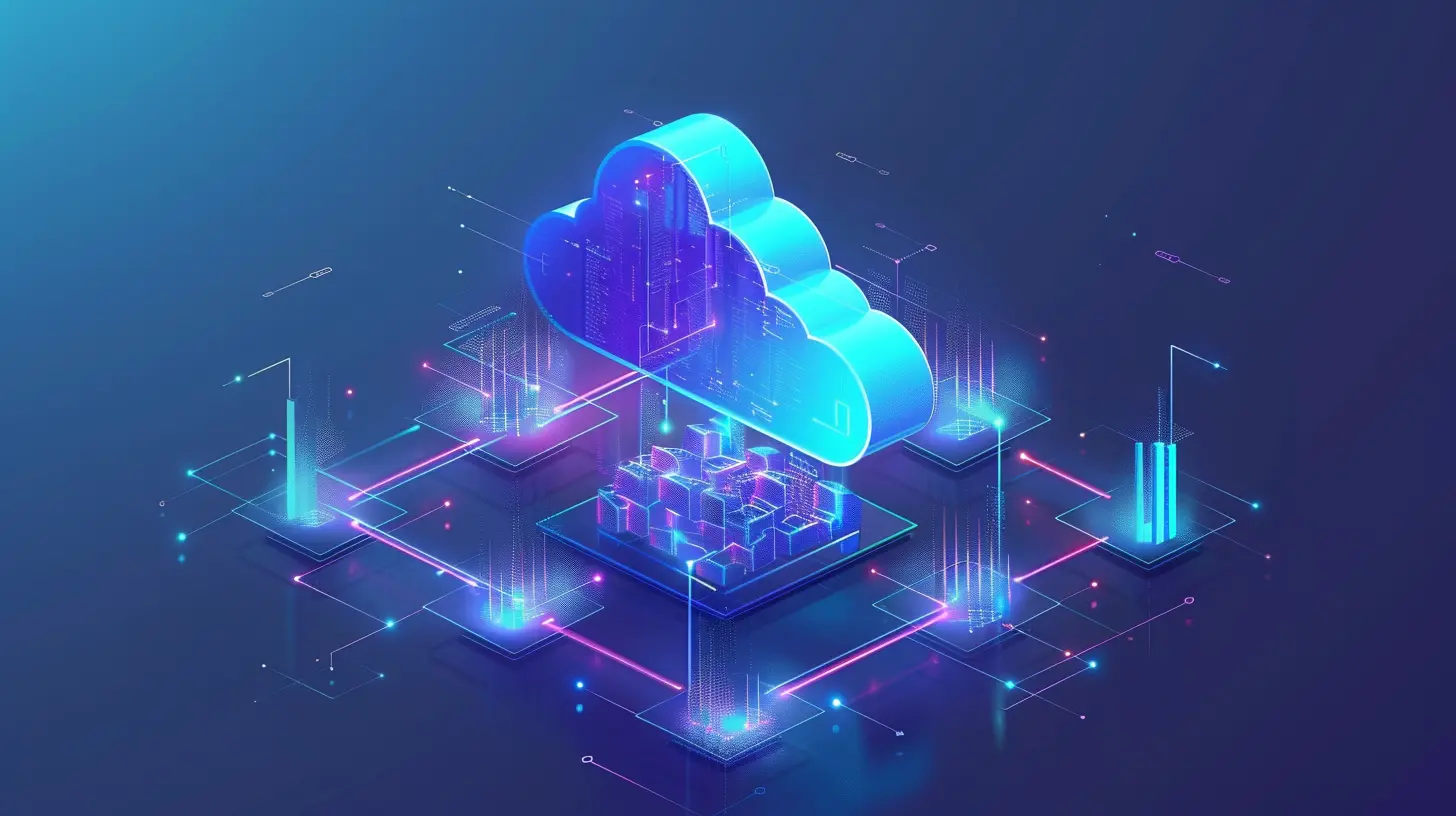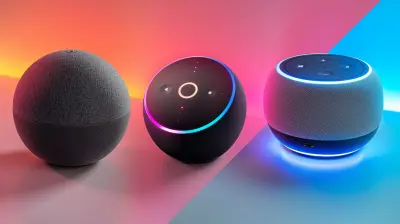The Evolution of Cloud Databases: From SQL to NoSQL and Beyond
6 June 2025
Let’s take a walk down memory lane and talk about how we went from traditional SQL databases to the cloud-based, highly-scalable NoSQL systems — and even further beyond. If you’re curious about how our data storage and access needs have shaped the tech landscape, you’re in for a treat.
Databases aren’t just about storing data — they’re the backbone of every app, every website, and every service we rely on today. And just like everything else in tech, databases have evolved. Big time.

The Birth of SQL: Structured and Reliable
Before cloud computing became a buzzword, there was SQL — Structured Query Language. Born in the 1970s, SQL databases like Oracle, MySQL, and Microsoft SQL Server were (and still are) super reliable for handling structured data.Think of SQL databases like a big Excel spreadsheet on steroids. Rows, columns, data types — all neat and tidy. Perfect for applications that needed transactional integrity like banking systems, HR software, and inventory management.
The best part? SQL databases followed ACID principles:
- Atomicity
- Consistency
- Isolation
- Durability
Sounds fancy, right? Basically, your data remained accurate and secure, even if the system crashed mid-operation.
But as web apps exploded and mobile devices became mainstream, something happened…

The Problem with Traditional SQL in a Cloud World
SQL isn’t broken — far from it. But as the world shifted towards cloud-native applications and voluminous user-generated data, SQL systems started showing their age.Here’s why:
- Scalability issues: Vertical scaling (adding more power to one machine) hits limits and gets expensive.
- Rigid schema: Adapting to new data types or changing structures was painful.
- Performance bottlenecks: Handling massive reads and writes simultaneously? Not so smooth.
In short, SQL was like trying to drive a reliable sedan on an off-road trail — not the best fit.
Enter NoSQL.

NoSQL Arrives: Flexible, Scalable, and Ready for the Cloud
NoSQL (short for "Not Only SQL") databases broke the mold. They ditched rigid schemas and embraced flexibility. And most importantly — they were built with horizontal scaling in mind, which made them perfect for cloud environments.Popular NoSQL players include:
- MongoDB (document-based)
- Cassandra (column-family)
- Redis (key-value)
- Neo4j (graph-based)
Instead of trying to be one-size-fits-all, NoSQL took a "pick the right tool for the job" approach.
Want to store millions of user profiles with different attributes? Document-based NoSQL like MongoDB had your back.
Building a massive recommendation engine? Graph databases like Neo4j were the go-to.
And since NoSQL systems were designed to scale out by adding more servers (rather than scaling up), they played nicely with cloud platforms like AWS, Azure, and Google Cloud.

Cloud-Native Databases: Taking Things to the Next Level
Once cloud providers entered the scene, everything changed — again.Cloud-native databases began popping up, purpose-built for distributed environments. These were not just old databases in cloud wrappers; they were re-engineered from the ground up for performance, availability, and elasticity.
Think of:
- Amazon Aurora – A SQL-compatible database designed for the cloud from day one.
- Google Cloud Spanner – A globally distributed SQL database with automatic sharding and ACID compliance.
- FaunaDB – A serverless database with a unique data-native model.
- CockroachDB – Built to survive anything, even full data center failures.
These databases bridged the gap between SQL and NoSQL, giving you the consistency of SQL with the scalability of NoSQL. Best of both worlds? You bet.
And let’s not forget: with serverless architectures, these cloud-native databases handle provisioning, scaling, and maintenance automatically. Developers can now focus on building apps without babysitting their infrastructure.
The Rise of Multi-Model Databases
As if things weren’t already evolving fast enough, the industry took another leap — into multi-model databases.What’s that, you ask?
Imagine if your database could handle documents, graphs, key-value pairs, and relational data — all in one system.
That’s the magic of multi-model databases. They eliminate the need for multiple database systems within a single app, streamlining development and reducing overhead.
Popular names in this space include:
- ArangoDB
- OrientDB
- Couchbase
It’s like the Swiss Army knife of databases — one tool for everything.
The Future: AI-Native and Quantum-Ready Databases?
So what’s next?Glad you asked.
As AI and machine learning become more integral to how we process and analyze data, we’re starting to see the rise of AI-native databases. These are optimized for high-performance analytics and real-time decision-making.
Examples:
- SingleStoreDB
- Pinecone (for vector search and recommendation engines)
- Weaviate
And then there’s the possibility of quantum databases — though we're not quite there yet. But researchers are already experimenting with storing and retrieving information using the principles of quantum mechanics. Crazy, right?
Who knows? In a few years, we might not even be talking in terms of SQL vs. NoSQL but in qubits and entanglement.
Choosing the Right Database: It’s All About Use Case
Let’s be real — there’s no “one true database” anymore. The best choice depends on what you’re building.Here’s a quick guide:
| Use Case | Ideal Database Type |
|----------|----------------------|
| Financial transactions, inventory systems | SQL (e.g., PostgreSQL, MySQL) |
| Flexible schemas, rapid prototyping | NoSQL Document (e.g., MongoDB) |
| Massive distributed systems | Column-family (e.g., Cassandra) |
| Real-time recommendations | Graph (e.g., Neo4j) |
| IoT, sensors, device logs | Time-series (e.g., InfluxDB, TimescaleDB) |
| AI-powered tools and vector search | AI-native (e.g., Pinecone, Weaviate) |
When in doubt, start simple. Migrate only if and when the use case demands it.
Cloud Security and Compliance: More Important Than Ever
Of course, with great flexibility comes great responsibility.As more businesses move to cloud databases, concerns around security, privacy, and regulatory compliance (like GDPR and HIPAA) have grown.
Thankfully, modern cloud databases offer:
- Encryption-at-rest and in-transit
- Role-based access controls
- Audit logging
- Automated backups & failovers
Still, it’s up to you — the developer, the architect, the sysadmin — to follow best practices, configure access correctly, and not leave ports open to the world. (Yes, people still do that.)
Final Thoughts: The Journey Never Ends
From the rigid rows of SQL to the freewheeling documents of NoSQL, and now cloud-native and AI-driven platforms — the database world has transformed dramatically.And it’s only picking up speed.
One thing remains constant though: data is king. Whether you're building a small app for a few hundred users or architecting systems for millions, the way you store, access, and manage data will define user experience, performance, and scalability.
So stay curious, stay flexible, and stay open to change. Because in tech, evolution isn’t optional — it’s survival.
all images in this post were generated using AI tools
Category:
Cloud ComputingAuthor:

Vincent Hubbard
Discussion
rate this article
3 comments
Uriah Sanders
This article succinctly captures the transformative journey of cloud databases. Highlighting the shift from SQL to NoSQL reveals not only technological advancements but also evolving needs in data management. Excited to see where this innovation will lead next!
June 14, 2025 at 10:47 AM

Vincent Hubbard
Thank you for your insightful comment! I'm glad you found the article capturing the journey of cloud databases. Exciting times ahead!
Soraya Long
This article brilliantly captures the evolution of cloud databases, highlighting the shift from SQL to NoSQL. Understanding these changes is crucial for businesses seeking to leverage data effectively in today’s digital landscape.
June 7, 2025 at 11:57 AM

Vincent Hubbard
Thank you for your insightful feedback! I'm glad you found the article helpful in understanding the shift in cloud databases.
Zara Perry
Great insights! Excited to see future innovations in cloud databases!
June 6, 2025 at 3:00 AM

Vincent Hubbard
Thank you! I'm excited about the future too!



